
Note: This story was last updated at 2:30 p.m. June 28.
Tennessee reported about 1,400 new cases of COVID-19 on Friday, a new daily high, and the state passed 40,000 total cases on Saturday.
There were 1,410 new cases reported Friday. Of those, 1,396 were new confirmed cases, according to the Tennessee Department of Health. Fourteen were new probable cases.
The previous high was 1,188 new cases a week earlier, on June 19.
Seven of the state’s top 10 highest new daily case counts have been in the past two weeks. Five of them have been in the past five days.
The number of cases increased by 728 on Saturday, pushing the total to 40,172. Of those cases, 39,848 were confirmed, and 324 were probable.
The number of cases in Anderson County rose by one to 90 on Saturday. The day before, on Friday, the case count went up by eight, the highest increase in the county. Previously, the largest daily increase had been five.
While the hospitalization rate has fallen across the state, the number of current hospitalizations has increased during the past few weeks from 391 on Friday, June 12, to 484 on Thursday, June 25.
Still, that’s likely a relatively low percentage of patients hospitalized statewide. Lisa Piercey, commissioner of the Tennessee Department of Health, recently said that 400 patients is equal to only about 4 percent of the hospital patients across the state.
Piercey has said the number of hospitalizations is not climbing as fast as the number of new cases, possibly because COVID-19 is infecting younger patients, who generally aren’t considered as vulnerable.
About two months ago, when the case count passed 10,000, the average age of patients was 44. On Saturday, it was 39.
The death rate in Tennessee has remained relatively flat. At about 1.5 percent, Piercey has said it is among the lowest in the nation.
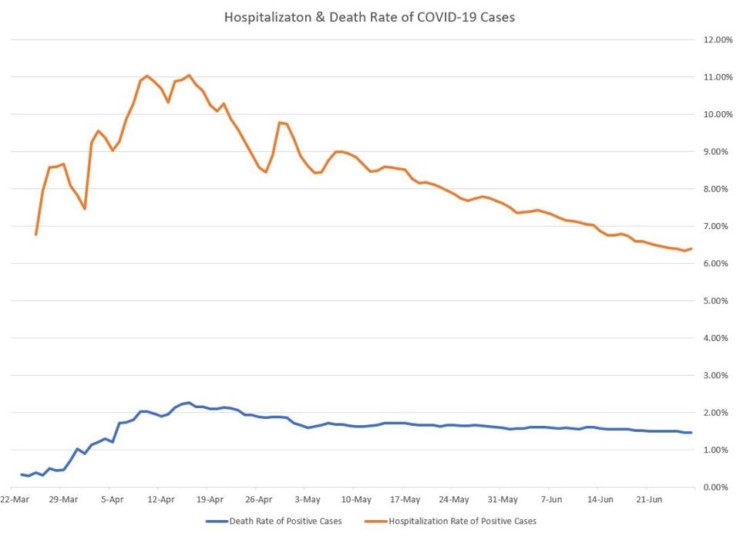
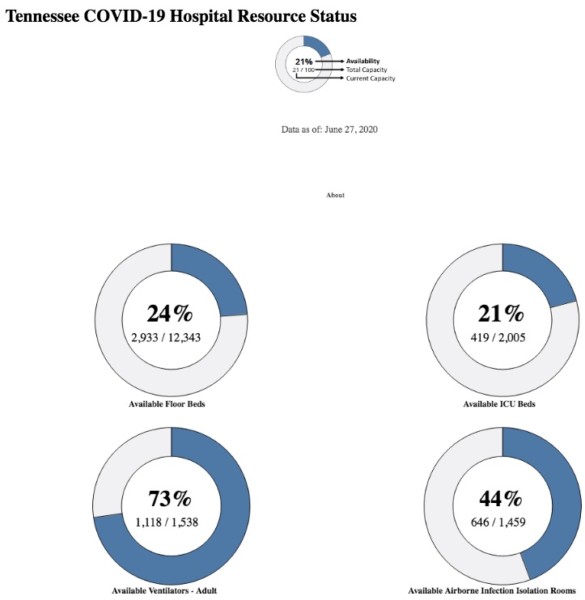
During a Tuesday press conference, Tennessee Governor Bill Lee said state officials are watching the numbers. The numbers that are most important to him, Lee said, are the death rate, then hospitalization numbers and health care capacity.
“What we are watching for are trends,” Lee said.
Other information important to the governor includes data about the number of cases, patient ages, and illness durations.
During the Tuesday press conference, Piercey said half of COVID-19 cases in Tennessee now come from unknown sources. That is different than what happened early in the pandemic, when patients would get COVID-19 from a family member or a cluster, Piercey said.
She said the change is not surprising as people get out and move about. There is more community spread, Piercey said.
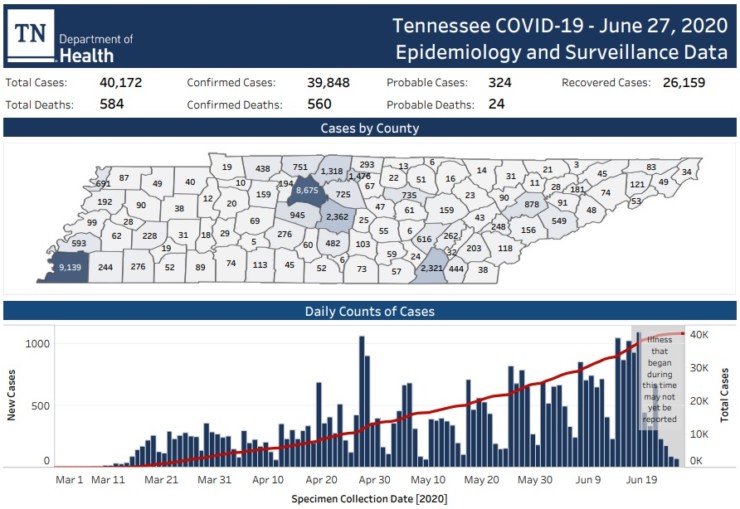
Statewide, the positivity rate appears to have been higher than normal the past five days, meaning that more people tested positive of those who were tested. It’s not clear why.
The positivity rate was 14.1 percent on Tuesday. It fell to 7.2 percent on Wednesday and climbed to 8.7 percent on Thursday and 9.7 percent on Friday. It increased to 11.2 percent on Saturday.
Before then, going back to Sunday, June 14, it had been, with one exception, in the range of 4.9 percent to 8.8 percent.
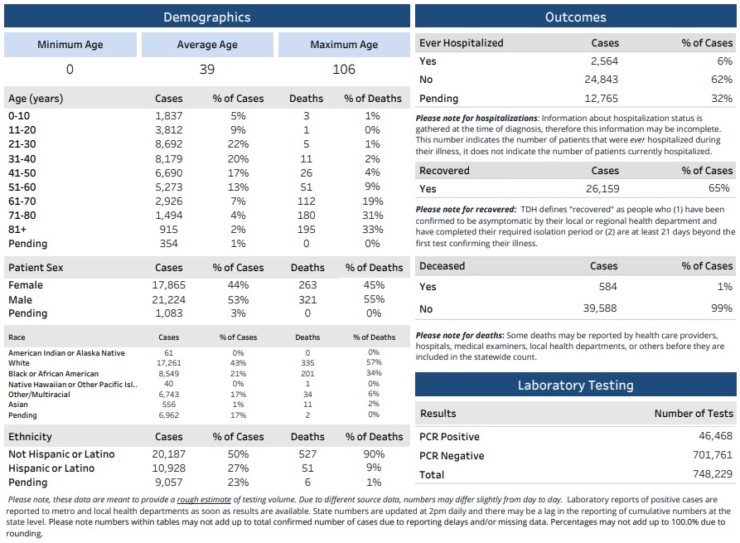
Oak Ridge Today hasn’t been tracking the daily positivity rate in Anderson County, but overall it’s lower than the state average of 5.3 percent. The positivity rate in Anderson County, comparing total cases to total tests, is 1.3 percent.
There has been an average of about 2.2 new COVID-19 cases per day in Anderson County in the past two weeks, when the total case count rose from 59 to 90. There have been two deaths in Anderson County and 61 recoveries. There are 26 active cases in the county.
Nine people have been hospitalized at some point in Anderson County with COVID-19, Mayor Terry Frank confirmed Sunday.
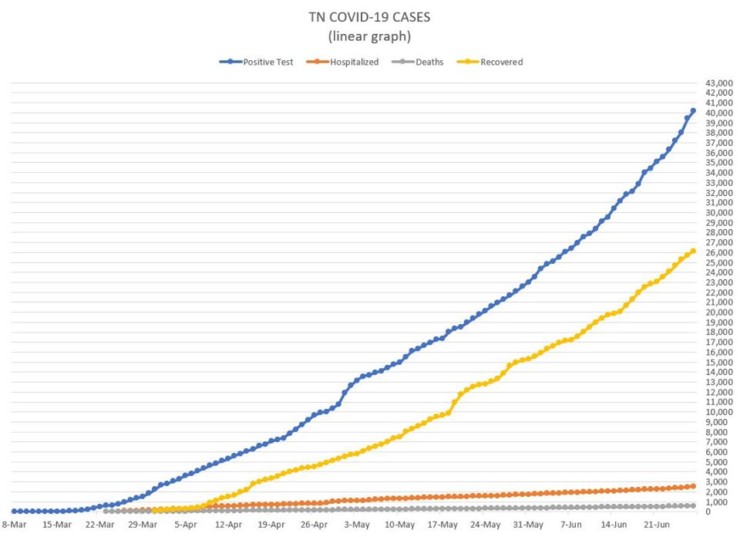
The counties most affected by COVID-19 include Shelby (Memphis area), Davidson (Nashville area), Rutherford (Nashville area), Hamilton (Chattanooga area), Trousdale (Turner Trousdale Correctional Center), Sumner and Williamson (both in the Nashville area), and Knox (Knoxville area).
But other “hot spots” have emerged, including Sevier County in East Tennessee, a tourist destination at the entrance to the Great Smoky Mountains.
Tennessee officials want residents to get out and move about after many businesses and organizations re-opened following a shutdown of a month or more, but they want people to do it safely, Piercey said. Measures to help prevent the spread of the virus include washing your hands, covering your face, and avoiding crowds when you can, Piercey said.
On Saturday, the Tennessee Department of Health reported 584 deaths due to COVID-19 since the first case was diagnosed in the state on Wednesday, March 4.
There have been 2,564 hospitalizations and 26,159 recoveries.
The number of active cases is now over 13,000.
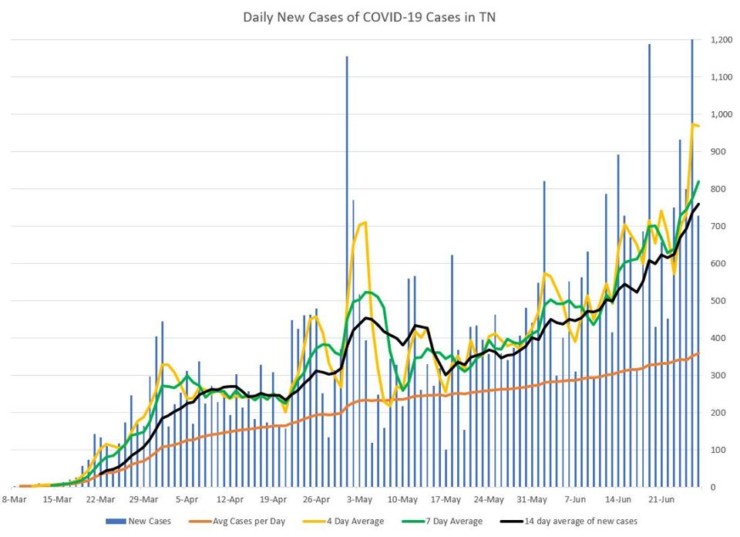
The number of new daily tests doesn’t appear to have changed significantly in the past two weeks, generally ranging between 5,310 and 15,176.
The single highest percentage of cases is still among patients who are 21 to 30 years old. The next three highest percentage of cases are among the next three older age groups: 31-40, 41-50, and 51-60.
Tennessee’s highest death rate has been among elderly patients, especially those in long-term care. The deaths due to COVID-19 are concentrated among those who are 61 years old and older. There have been between 112 and 195 deaths in each of those age groups.
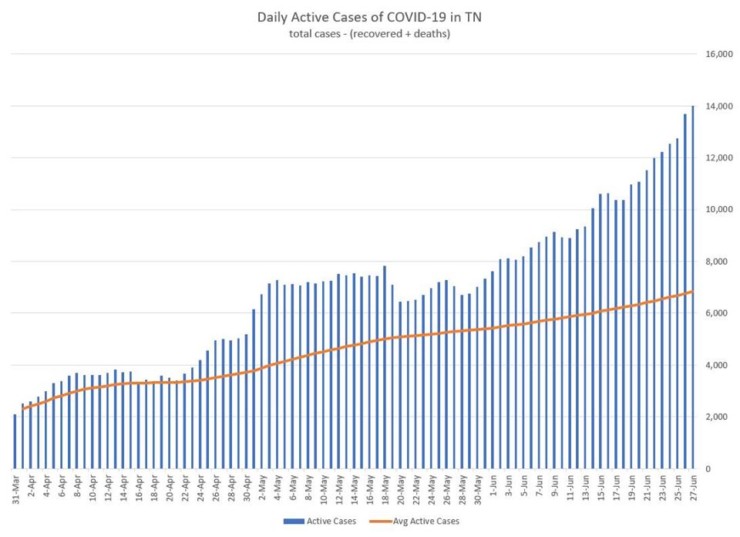
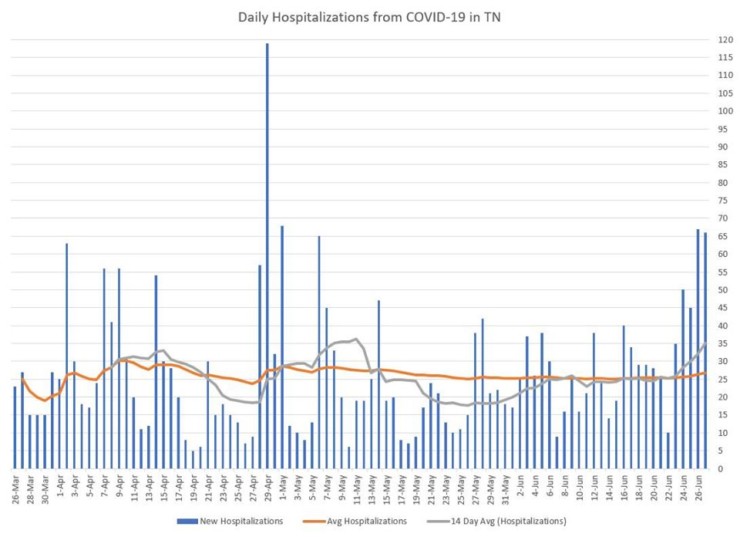
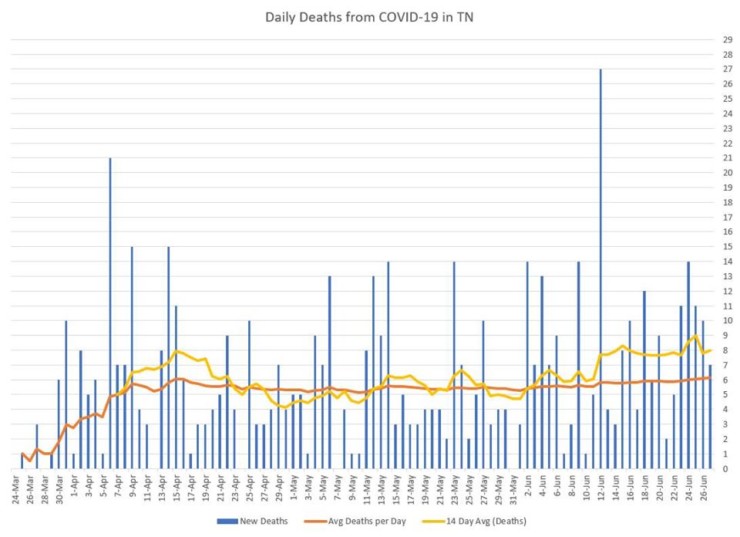
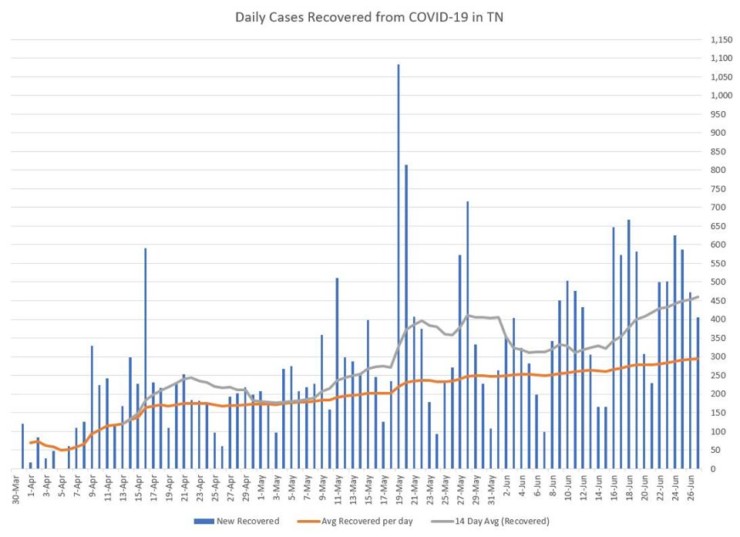
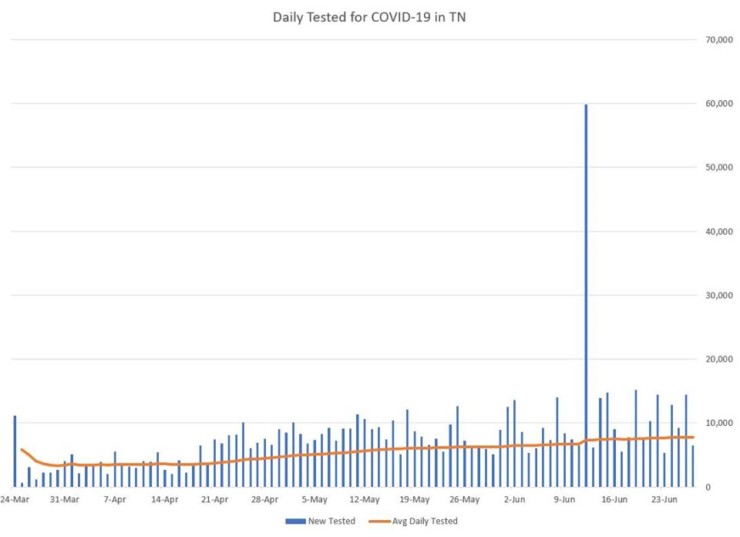
Leave a Reply